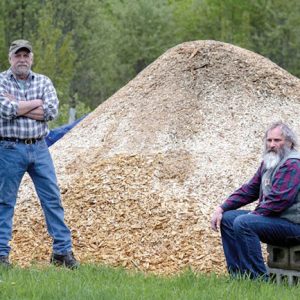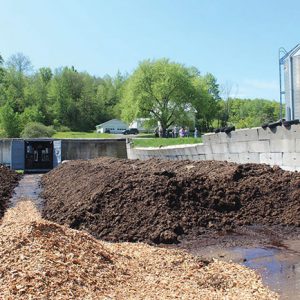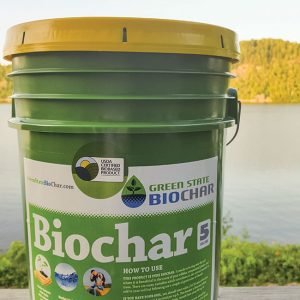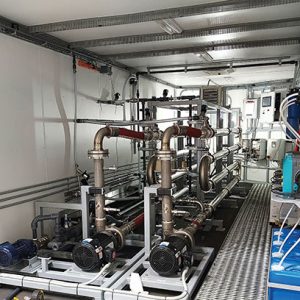
Features
Environment Protection
Protection
Reducing phosphorus in Vermont watersheds
New solutions may soon assist in ensuring waterways stay beautiful and usable.
November 8, 2022 by Ronda Payne
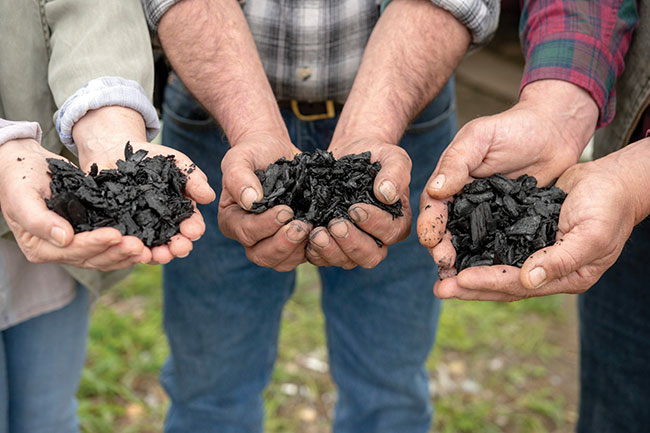 The team at Green State Biochar, which is a past recipient of a grant from the Vermont Phosphorus Innovation Challenge for its use of biochar.
Photos courtesy of Green State Biochar.
The team at Green State Biochar, which is a past recipient of a grant from the Vermont Phosphorus Innovation Challenge for its use of biochar.
Photos courtesy of Green State Biochar. Farming practices of the past have created issues for the present. The state of Vermont wants to mitigate some of those issues before they become even larger problems in the future.
Although phosphorus has an important place in plant growth, accumulations from decades of unchecked application have caused runoff issues with undesirable and unsafe plant and algae growth in the state’s waterways.
It isn’t that Vermont’s farmers of the past had the wrong idea. Their application of phosphorus-rich sources to the soil indeed helped with crop health and vigor. But the volume and timing of those applications were, in retrospect, excessive. Finding ways to remove those phosphorus stores before they hit waterways, control future phosphorus applications and reuse captured phosphorus will improve the future for everyone who values the state’s water sources.
Modern farmers have been employing nutrient management planning to control phosphorus application rates and timing in recent decades, but that historic buildup continues to be a chief polluter. Add to this changing weather patterns that lead to increased runoff of both sources and the issue has grown exponentially, making a number of favorite waterways unsafe for swimming, smelly for humans and harmful to animals.
A challenge to develop solutions
The state wanted to take a new approach to the problem. In 2018 governor, Phil Scott announced the Vermont Phosphorus Innovation Challenge (VPIC). This unique competition invited organizations to submit proposals to develop proof of concept methods for removing phosphorus from manure and/or other waste streams, recovering it and making it available for beneficial reuse. The challenge is now in its third stage with three organizations proceeding from agreements in November 2019.
Jeff Cook, administrative coordinator for the challenge, and administrative services manager III with the Vermont agency of agriculture, food and markets says through the challenge, the state is looking for entrepreneurs that can scale up reliable phosphorus management solutions.
“Hopefully this initiative will result in a reduction of phosphorus levels in our waters,” says Cook. “Even if it does not, challenges like this one are beneficial as they highlight water quality concerns which could result in future breakthroughs or technology. Solutions will not be easy but ways to encourage thinking out of the box should be encouraged.”
He adds that often, these types of efforts are hampered by finding resources. But through the challenge, the state is committed to partner on the development of solutions that will create environmental benefits for the future.
Agrilab Technologies
Composting, drying and other strategies are the cornerstones of Agrilab Technologies’ plan to capture and redistribute phosphorus in Vermont according to Brian Jerose, president and co-founder of the organization. This processing of manure will allow for continued soil improvement and fertility while also helping the environment on a number of levels.
“There are plenty of nutrients, including phosphorus in farm manures,” he says. “Too many of those nutrients are getting into Lake Champlain and other surface body water in Vermont.”
He says his organization’s efforts and subsequent involvement in the challenge stem from a number of things – not the least of which is that he, his wife and their daughters like to swim in Lake Champlain and other Vermont waterways.
“[There are] times when that’s not possible due to pollution,” he says.
Currently, working with Magnan Brothers Dairy, Agrilab Technologies has established its compost aeration and heat recovery unit at Burnor Farm in May of 2021. The unit is mounted inside an insulated 20-foot shipping container and produces compost from P cake (from dairy manure solids, scraped manure and pen manure), wood chips, leaves, sawdust and waste feed.
P cake has not yet found markets in Vermont for a range of reasons, so Jerose sees an opportunity in creating a range of phosphorus-based products for various uses such as agricultural, municipal, landscaping and residential applications. He intends to host different product demonstrations and trials for the various uses to educate potential users.
“We’re trying to build a network of farms,” explains Jerose. “The center hub of the site would be with the Magnan Brothers Dairy. We jointly operate an on-farm compost site.”
Because of the variety of practices that exist for manure handling, housing and management, the manure from other sites will be combined with that of the center hub site and the other waste materials. This will be stabilized, dried, blended and become a value-added end-user ready soil amendment.
Air is heated from thermal energy created through decomposition, then pushed and pulled through the pile (about 200-yards per batch) to aid the decomposition process. In some future batches, a phosphorus concentrate obtained from fellow challenge participant, Digested Organics, through its ultrafiltration unit, will be added to the dried end product.
“It helps the material be more stable and more readily stored during the winter months and it also makes it lighter and less expensive to transport,” he says of the process that creates a drier composted product.
Digested Organics
Filtration is being used by Digested Organics to show how phosphorus can be removed from manure, says the company’s CEO, Bobby Levine.
“We believe this is a cost-effective solution to protect sensitive watersheds in Vermont and beyond,” he says. “Phosphorus contamination of waterways from manure runoff is something critical to address to protect our environment and we believe direct filtration can be a critical tool.”
Through participating in VPIC, Levine hopes to collect enough data to prove that the overall costs of manure filtration are low enough to justify widespread use and implementation in any areas that would benefit.
Setting up at Green Dream Farm ensured Digested Organics had access to the necessary three-phase power required as well as a manure screw press to process material for running through the ultrafiltration (UF) unit. The UF system is contained in a portable trailer with the goal of removing >95 percent of phosphorus, >99 percent of suspended solids and >99.9 percent of pathogens from liquid manure. The fertilizer concentrate is collected in an on-site tank then transported to Agrilab Technologies and the resulting transparent liquid is ready for field application.
Because the phosphorus and liquid nitrogen in the fertilizer concentrate represents about 20 percent of the initial liquid manure volume, it’s easier to transport and efficient to apply on sites where it is needed.
University of Vermont and Village of Essex Junction
In some cases, the problem is also part of the solution. Struvite, a crystalline compound created by magnesium ammonium phosphate ions dissolved in a waste stream’s liquid water phase above saturation concentrations can cause scale in treatment plant surfaces. It can also be used to remove phosphorus from waste streams.
While struvite generation to remove phosphorus isn’t a new technology, the systems currently available exponentially exceed the needs in Vermont facilities like Essex Junction Wastewater Treatment Facility. The PePhlo system controls the formation and removal of struvite and other phosphorus forms outside of the treatment process. It’s a small-scale method that that is mobile, flexible and scalable to enhance struvite generation into crystals and phosphorus removal.
The system’s proprietary filter, complete with an electrical field, ensures the struvite crystals are captured and made available for future processing and use. The intent of the project is to prevent scaling in wastewater treatment sites and enhance the controlled creation and recovery of the phosphorus-containing minerals from wastewater streams while also providing a source of fertilizer through processed struvite.
Initial testing of the PePhlo reactor was successful enough to garner another grant to finalize the innovation and creation of a portable unit for transport to wastewater treatment facilities.
Hope for the future of Vermont (and other) waterways
All of these innovations look like they can benefit the environment and achieve the goals of the challenge to: capture and ideally reuse phosphorus; convert manure and other organic waste to beneficial products; and determine the amount of support needed to create successful solutions.
Clearly the positives, if financially viable to obtain, can benefit regions outside of Vermont. But, there is no silver bullet to solve the excess phosphorus and runoff problems that occur in numerous regions around the world. As seen with the collaboration between multiple challenge participants, solutions that piggyback on others are the real answer when combined with solid farm management practices.
